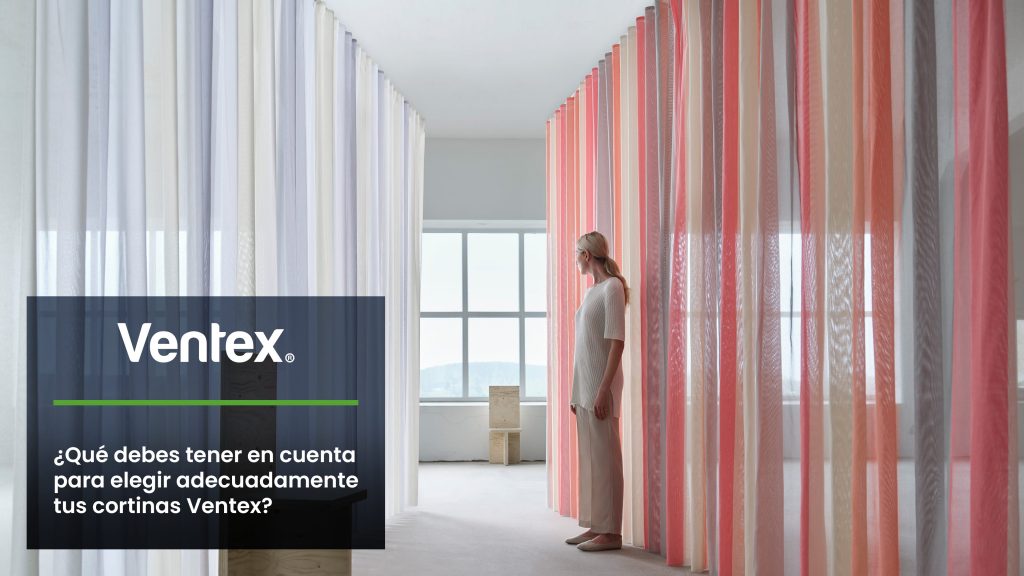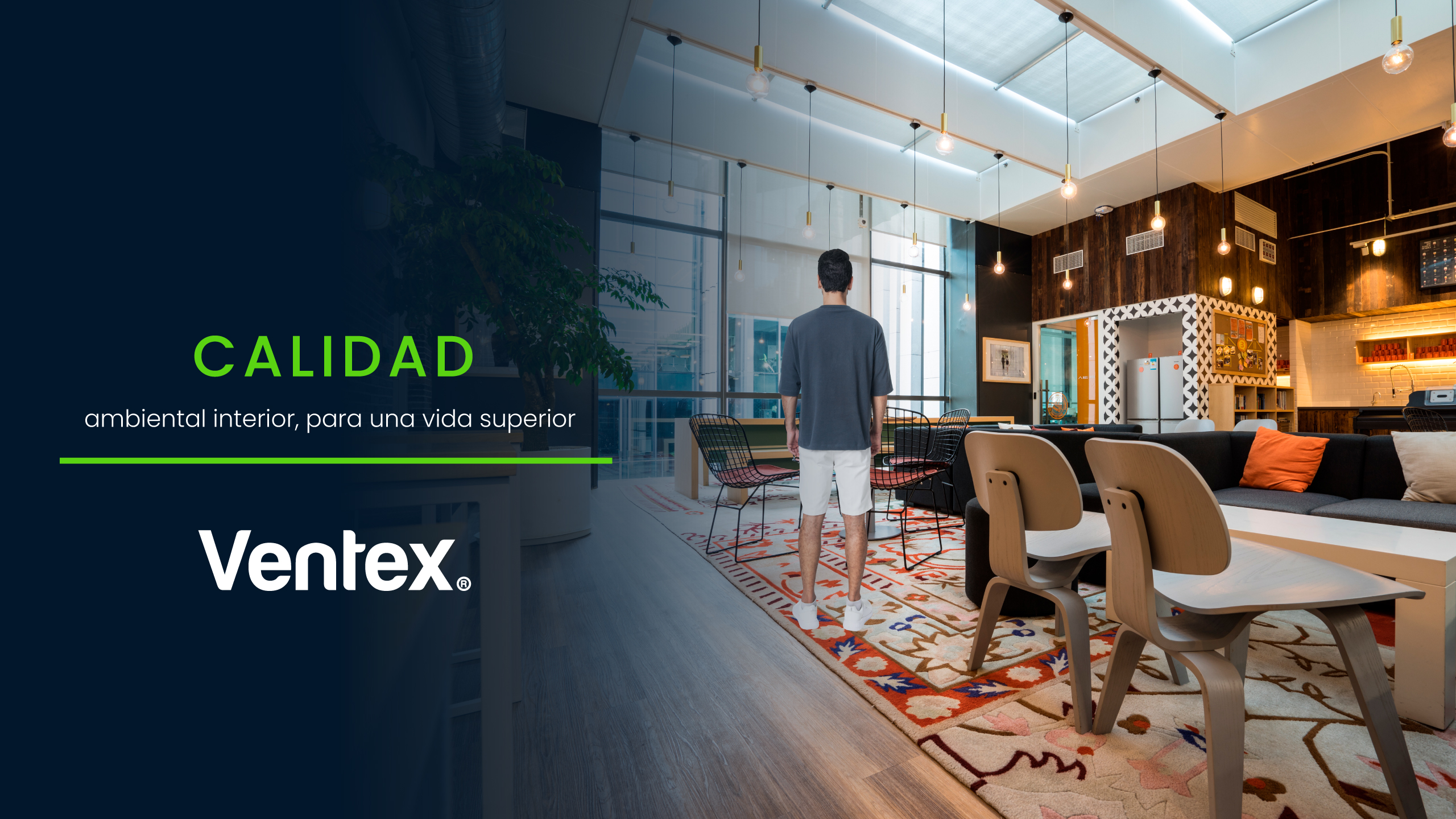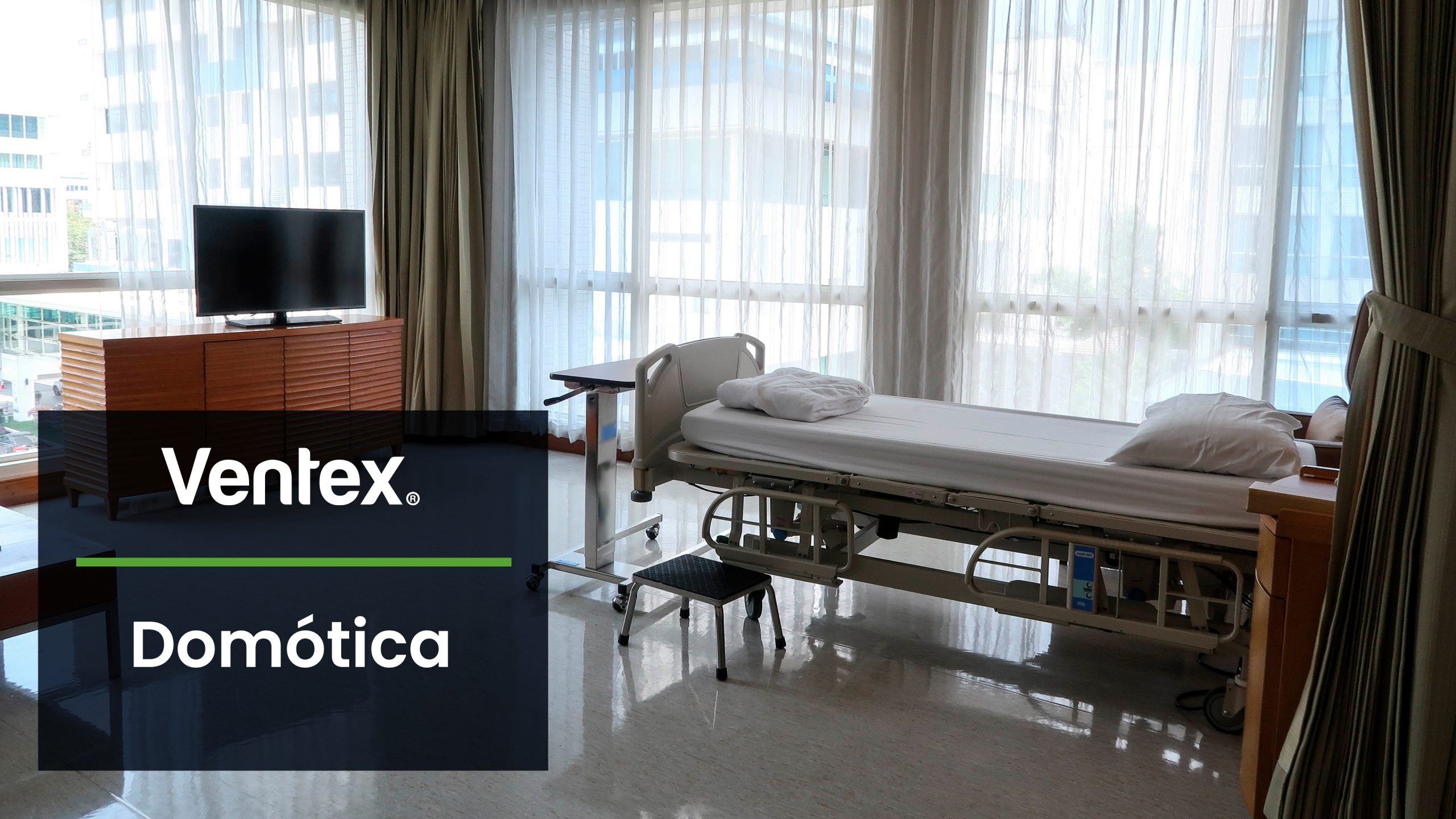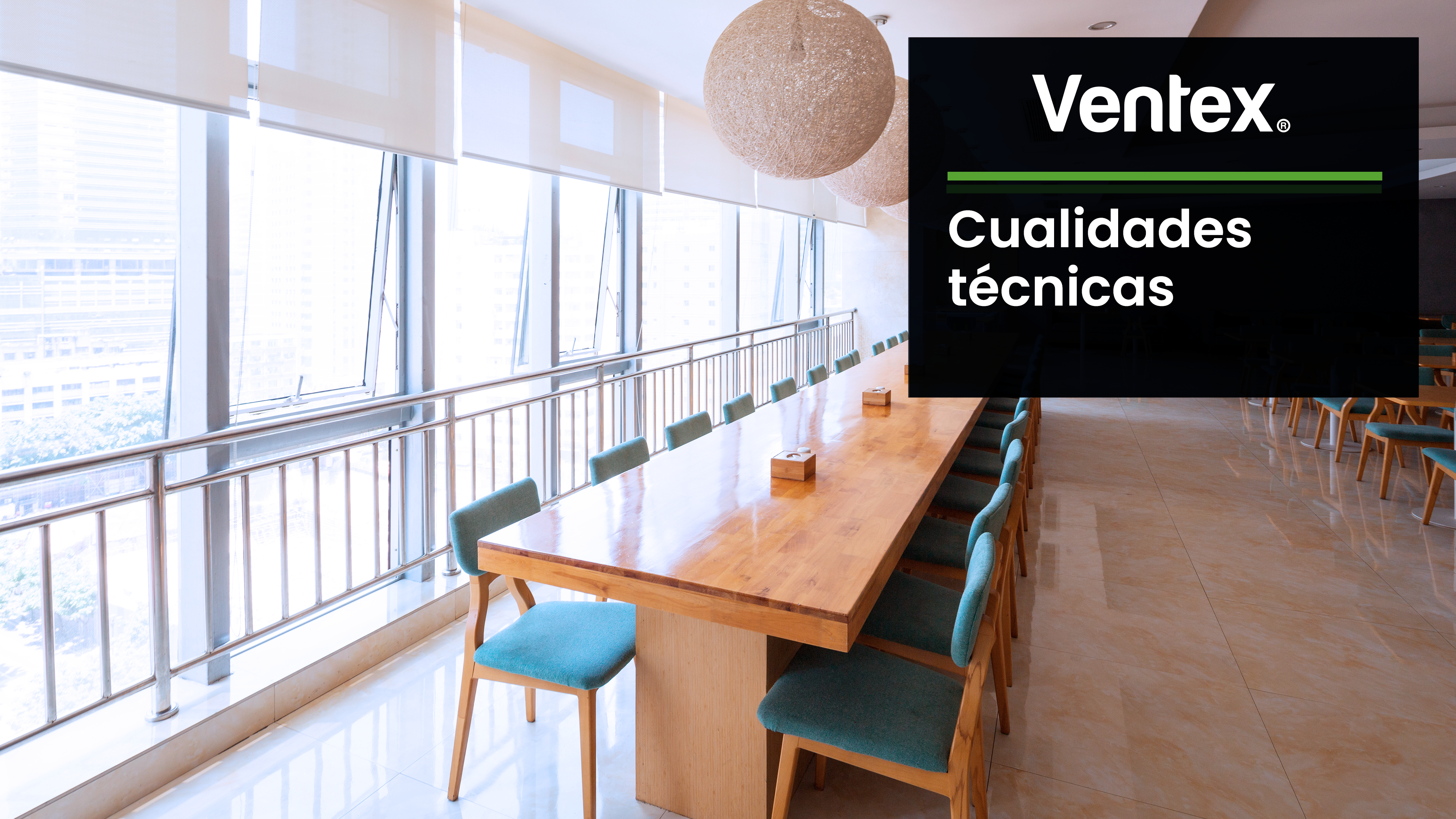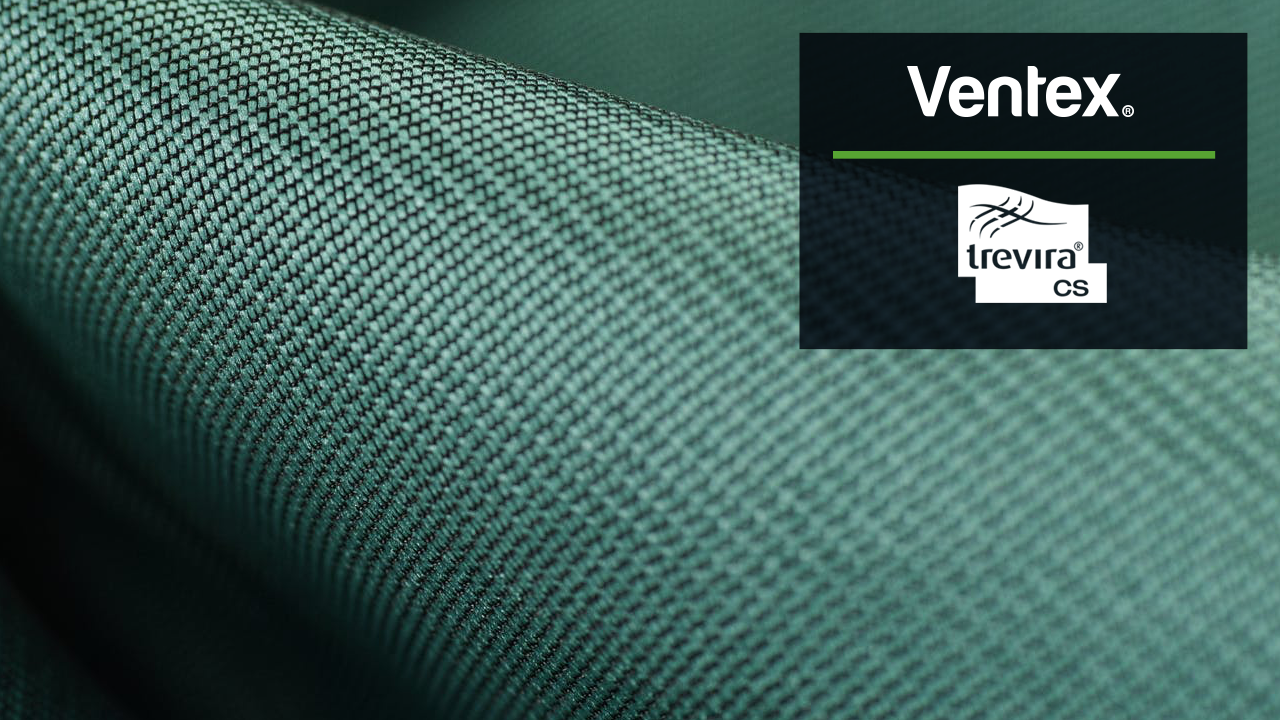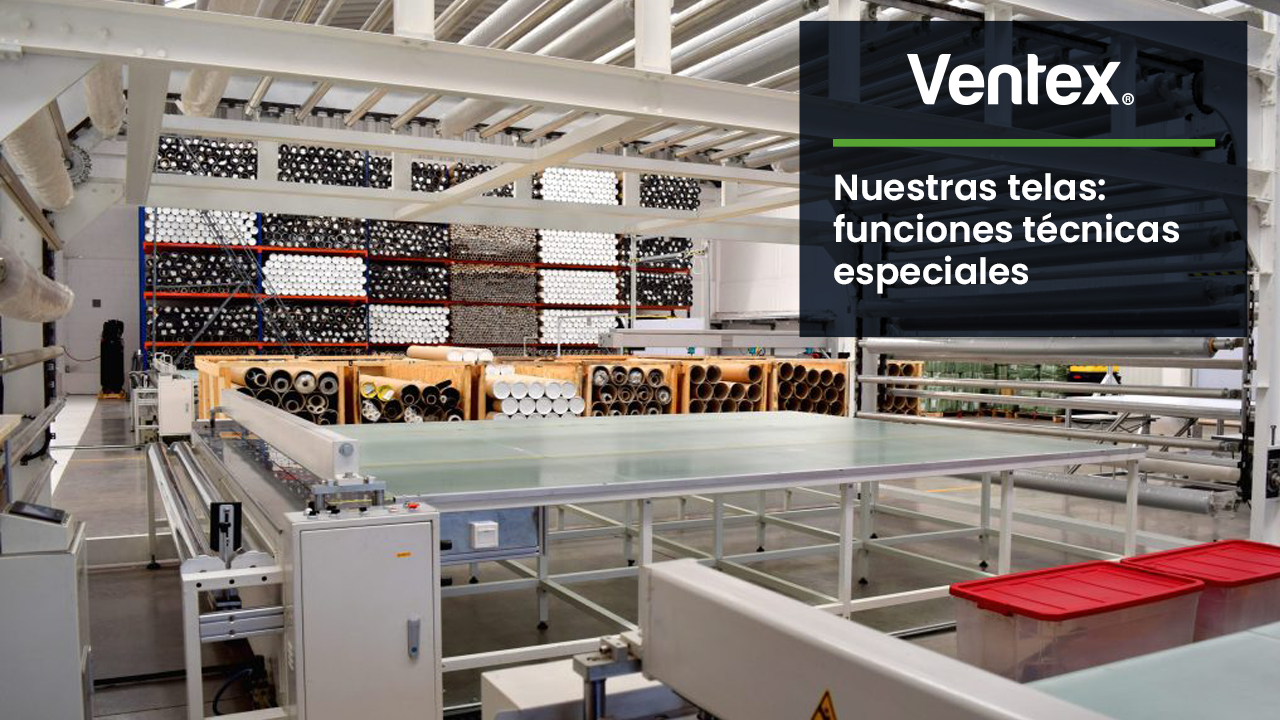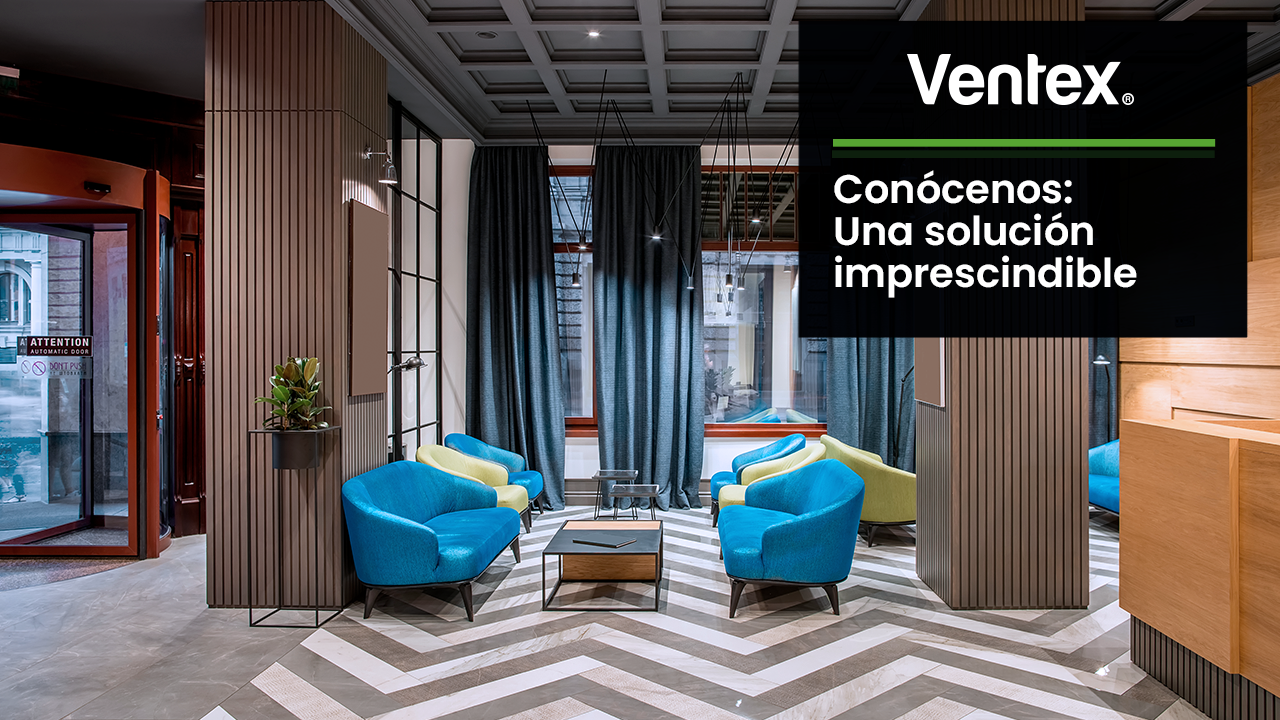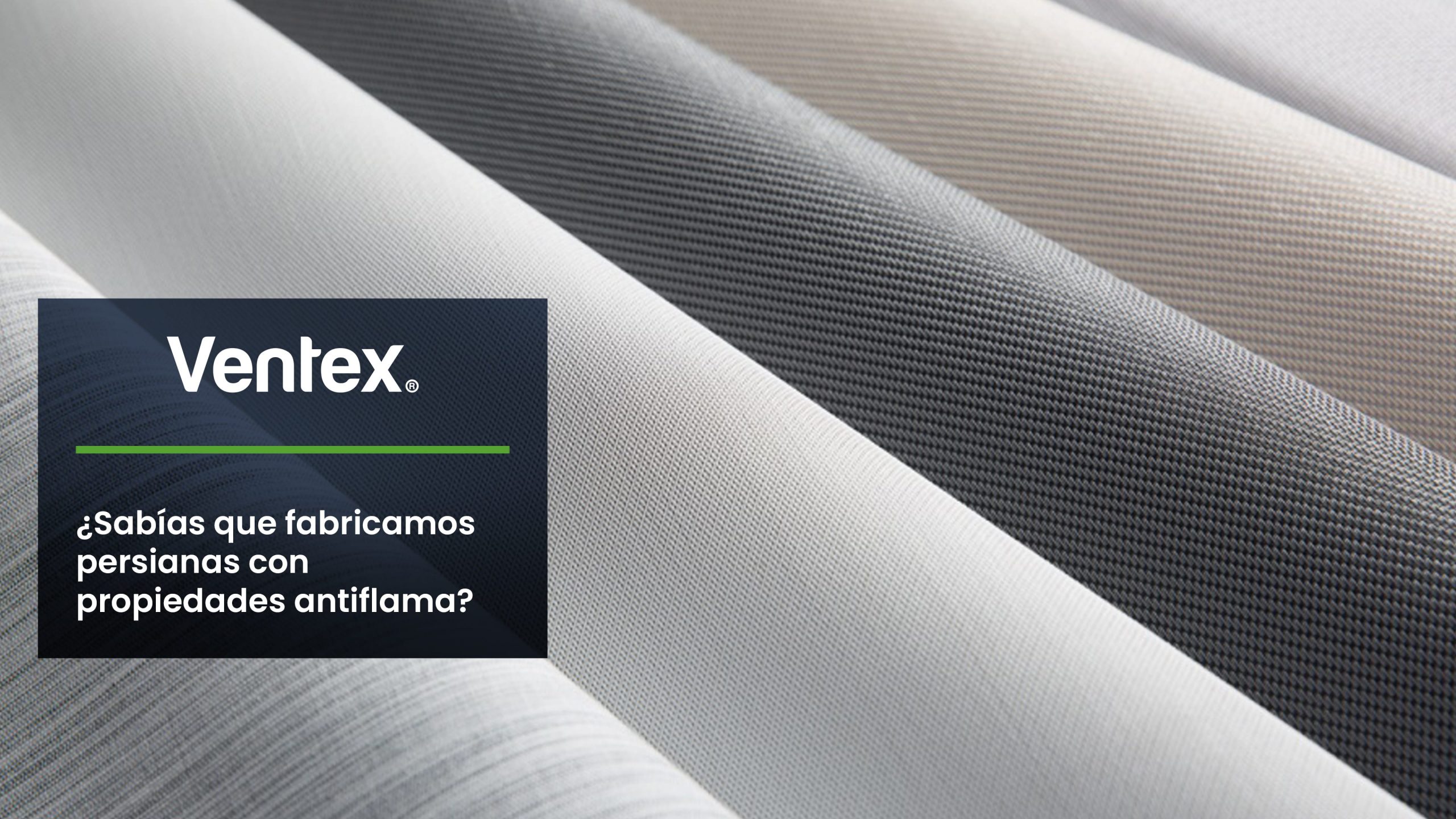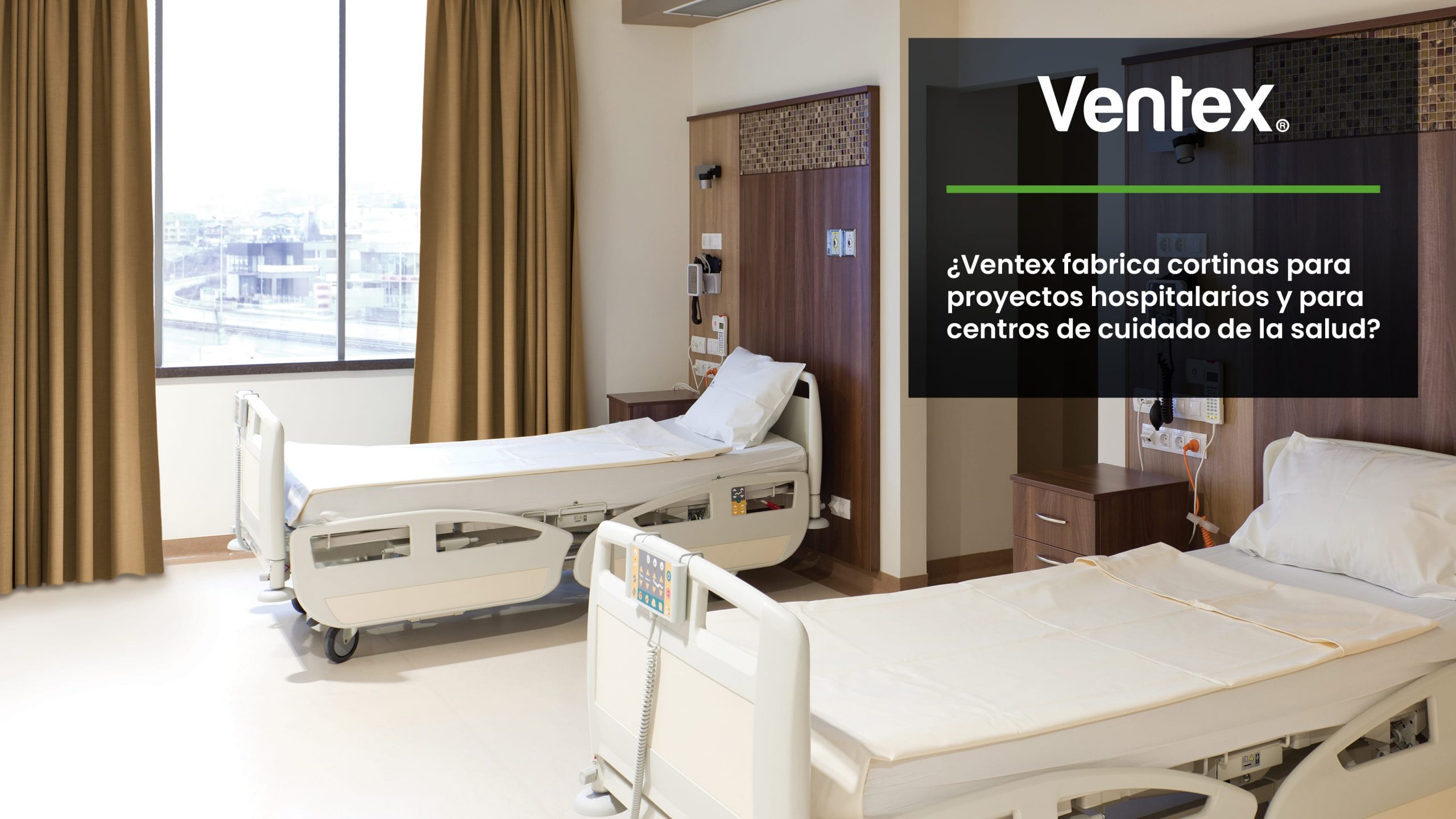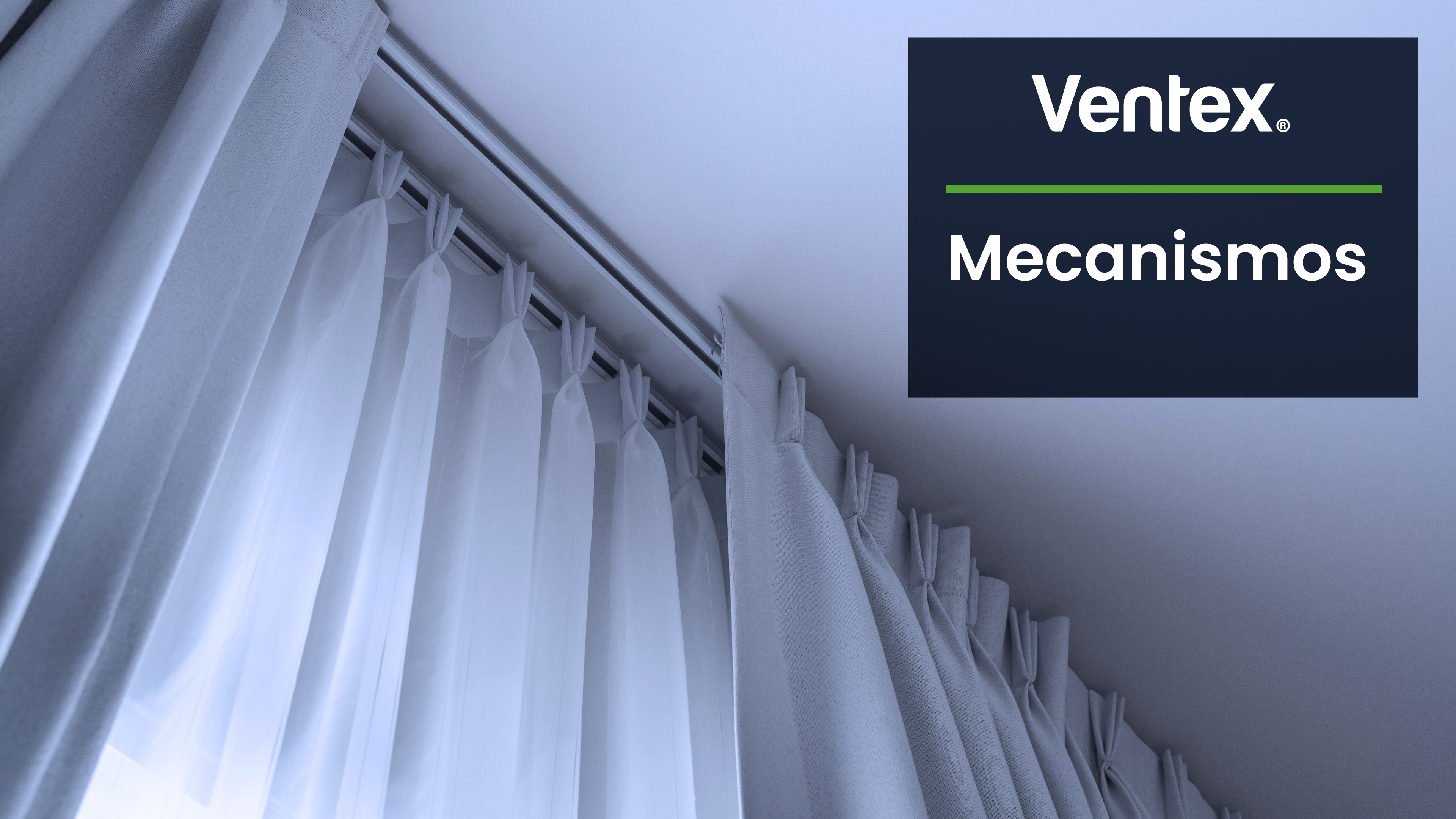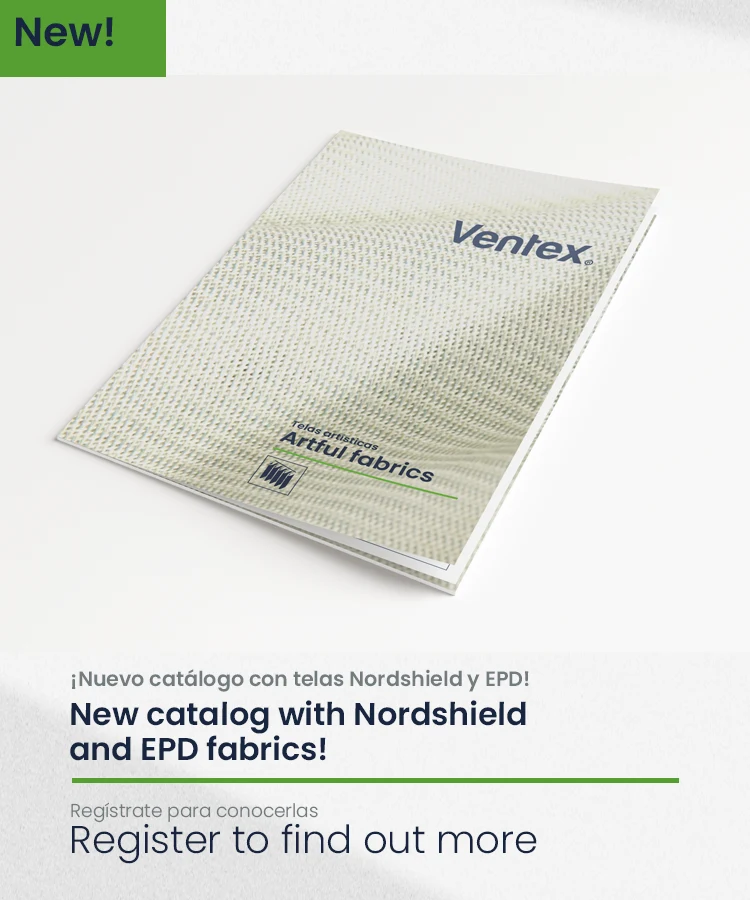What do you need to consider when choosing Ventex curtains?
- In order to choose the correct Ventex curtain you should consider the following:
– The place they will be installed. Is it a house, office, commercial space, restaurant, hospital, etc.?
– The issue the curtain will solve. Such as decoration, acoustics, privacy or solar protection.
– The type of curtain. This means choosing the design you require, be it wave curtains or traditional curtains.
– You must also choose the style of operation. The way in which the curtain will open and close, which can be:
– Manual (plastic edge).
– Wired motor (connected to a power source).
– Wire-free (motor that charges with solar panels).
– Finally, you must choose the textile considering that our fabrics for curtains contain the following variants:
– Aperture (translucent or blackout).
– Texture (smooth or rough).
– Color (neutral, warm or cold).
– Wash (machine or dry clean).
– Properties (antibacterial, acoustic and fire retardant).
– If you need further assistance to solve your decorating questions, please contact one of our specialists through ventex1.com
¿Qué debes tener en cuenta para elegir adecuadamente tus cortinas Ventex?
- Para elegir las cortinas Ventex más adecuadas para tu proyecto, debes considerar los siguientes aspectos:
– El lugar de instalación. Es decir, ¿dónde se instalará la cortina? ¿En una casa, oficina, comercio, restaurante, hospital, consultorio, etcétera?
– El problema que va a resolver. Debes definir cuál es la solución que te brindará la cortina: ¿decoración, aislamiento acústico, privacidad, protección solar?
– El tipo de cortina. Implica elegir el diseño que requieres, ya sean cortinas wave o cortinas tradicionales.
– También debes elegir el tipo de operación. O sea, la forma en que va a abrir y cerrar la cortina. Puede ser:
– Manual (bastoncillo plástico).
– Motorizado alámbrico (motor conectado al contacto de luz).
– Motorizado inalámbrico (motor que carga con celdas solares).
– Finalmente, debes considerar cómo te gustaría que fuera el tejido de la cortina, tomando en cuenta que las telas para cortinería presentan estas variantes:
– Apertura (translúcida o blackout).
– Textura (lisa o rugosa).
– Color (neutro, cálido o frío).
– Lavado (lavadora o tintorería).
– Propiedades (antibacteriales, acústicas y antiflama).
– Si requieres mayor asesoría para resolver tus dudas en decoración y crear tu espacio ideal, ponte en contacto con nuestros especialistas a través de ventex1.com

